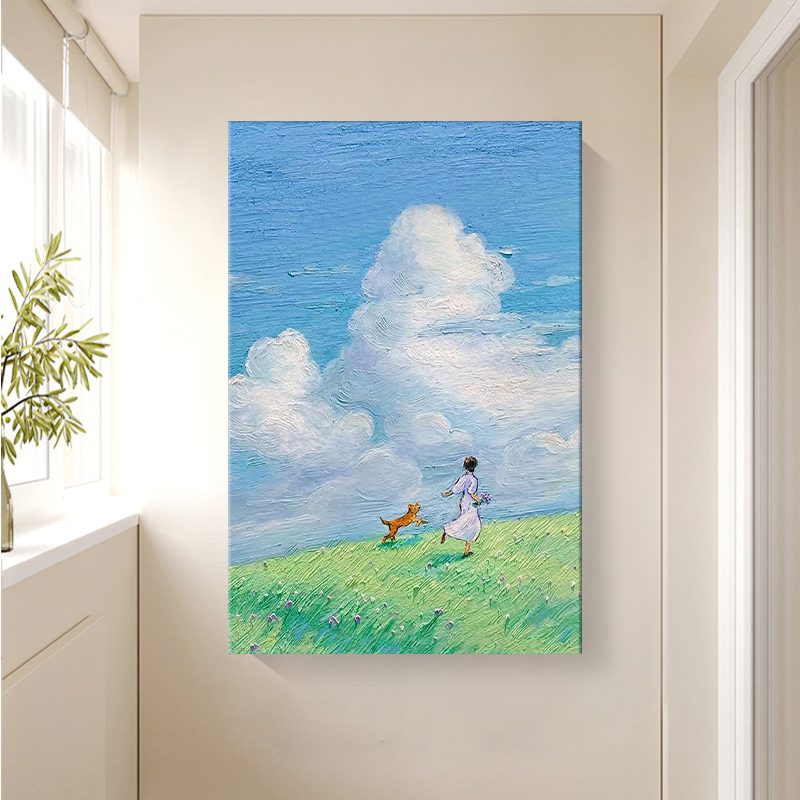Creative Ways to Decorate Kindergartens with Hand-Painted Oil Art
Kindergartens are spaces where young children learn, play, and explore their imaginations. The environment plays a crucial role in shaping their experiences, and hand-painted oil art offers a vibrant, engaging way to enhance these areas. Unlike printed decorations, oil paintings bring texture, depth, and a human touch that can inspire curiosity and creativity in children. By carefully selecting themes, colors, and placements, educators can transform classrooms, hallways, and play areas into visually stimulating environments that support early childhood development.
Designing Thematic Artworks That Spark Imagination
One of the most effective ways to use hand-painted oil art in kindergartens is by creating thematic displays that align with children’s interests and learning goals. For example, a nature-themed mural featuring trees, animals, and flowers can be painted on a large canvas and hung in the reading corner or outdoor play area. The rich colors and detailed textures of oil paints make these scenes feel alive, encouraging children to observe, ask questions, and invent stories about the natural world. Teachers can involve students in the process by asking them to suggest elements to include, fostering a sense of ownership and pride in the artwork.
Another popular theme is fantasy and adventure, which appeals to children’s love for make-believe. Oil paintings of castles, dragons, fairies, or space exploration can be displayed in dramatic play zones or near the storytelling circle. These artworks serve as visual prompts for imaginative play, helping children develop narrative skills and emotional expression. The versatility of oil paints allows artists to create whimsical details, such as glittering stars or soft, fluffy clouds, that capture children’s attention and spark their creativity.
For kindergartens focusing on cultural diversity, thematic artworks can introduce children to different traditions, festivals, and lifestyles. Paintings depicting traditional clothing, music, or architecture from around the world can be hung in multicultural corners or near the art station, encouraging discussions about empathy and inclusion. The durability of oil paintings ensures they withstand the wear and tear of active classrooms while remaining vibrant and engaging for years.
Enhancing Learning Zones with Interactive and Educational Art
Hand-painted oil art can also be used to design interactive and educational displays that support specific learning objectives. For instance, in the math corner, a large oil painting of a garden filled with butterflies, flowers, and insects can help children practice counting, sorting, and pattern recognition. Teachers can ask questions like, “How many red flowers can you find?” or “Can you spot a repeating pattern in the butterfly wings?” turning the artwork into a dynamic learning tool. The three-dimensional quality of oil paints adds a tactile element, making the scenes more memorable and engaging.
In the language arts area, oil paintings of storybook characters or alphabet-themed scenes can inspire literacy activities. A mural showing animals from “Old MacDonald Had a Farm” or a series of paintings illustrating the letters of the alphabet can serve as visual aids during circle time or independent reading. Children might be encouraged to retell the story based on the artwork or invent their own tales using the characters as prompts. The slow-drying nature of oil paints allows artists to blend colors smoothly, creating lifelike skin tones and expressive facial features that bring the characters to life.
For science-themed classrooms, oil paintings of the solar system, weather patterns, or animal habitats can introduce basic concepts in a visually accessible way. A large painting of the night sky with planets and constellations can spark discussions about astronomy, while a mural of a rainforest or ocean can teach children about biodiversity and ecosystems. These artworks can be paired with hands-on materials like magnifying glasses or model planets to create a multisensory learning experience that appeals to young minds.
Creating a Calming Atmosphere with Soft Colors and Nature-Inspired Designs
The overall ambiance of a kindergarten has a significant impact on children’s emotional well-being and behavior. Hand-painted oil art can contribute to a calm, soothing environment by incorporating soft colors and nature-inspired designs. Pastel shades of blue, green, and yellow are often used in paintings displayed in nap areas or quiet corners, promoting relaxation and reducing stress. A mural of a gentle stream, rolling hills, or a starry night sky can create a sense of tranquility, helping children unwind after active play.
Nature-themed artworks, such as paintings of clouds, leaves, or seashells, can also be used to decorate windowsills, bookshelves, or classroom doors. These small-scale pieces add visual interest without overwhelming the space, creating a cohesive and harmonious aesthetic. The texture of oil paints mimics the organic forms found in nature, making the artwork feel more authentic and inviting. Teachers might encourage children to touch the paintings gently (if framed behind glass) or observe the details up close, fostering a connection to the natural world.
In areas designated for group activities or transitions, such as hallways or entryways, oil paintings can serve as wayfinders or mood boosters. A series of paintings showing the seasons—spring flowers, summer sunsets, autumn leaves, and winter snow—can help children understand the passage of time and anticipate changes in their routine. Alternatively, a colorful mural of a rainbow or a friendly animal greeting visitors at the door can create a welcoming atmosphere that sets a positive tone for the day.
Transforming Kindergartens into Vibrant, Inspiring Spaces
Decorating kindergartens with hand-painted oil art is a powerful way to create environments that are both beautiful and functional. By designing thematic artworks that spark imagination, enhancing learning zones with interactive displays, and fostering a calming atmosphere with nature-inspired designs, educators can support children’s cognitive, emotional, and social development. The durability and timeless appeal of oil paintings ensure they remain a cherished part of the kindergarten environment, continuing to inspire and delight generations of young learners.
